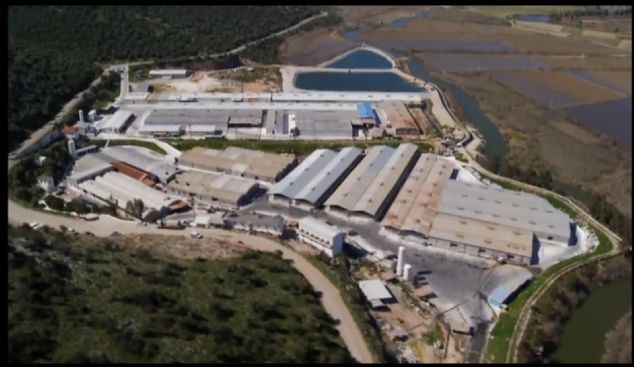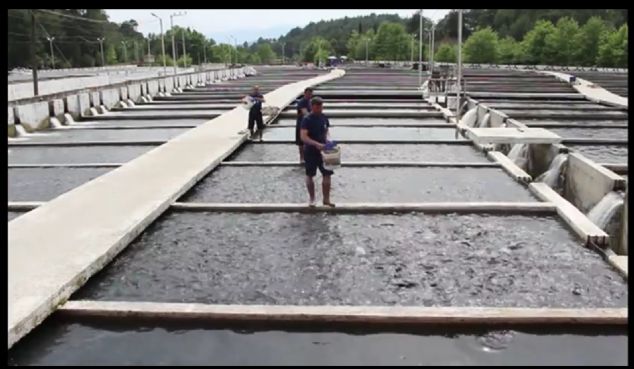
|
 |
Kitaplar » AQUACULTURE » Field Inspection and Projecting of Fish FarmFIELD INSPECTION AND PROJECTING FIELD INSPECTION 1.1. Issues Related to Water Properties Temperature, How is the chemical structure of water, current and depth, and the condition of the winds? Are there any pollution, possibility of future pollution, possibility of flooding and water clouding? 1.2. Issues Related to the Location of Soil and Water · Amount of water · Water supply (by motor or by gravity) · Legal status of water · Land amount · Soil structure in the field · The distance of the land to the water · Transport facilities · Possibility of electricity · Telephone facility · Title deed, map and topographic structure status 2. Market Situation 2.1. Is the fish to be produced a common species in the region? Is it recognized in the market? 2.2. Will it be studied on a species known in the region? If a new type is to be taken into consideration, what will be the regional market demand? 2.3. What is the relationship between the quality of the species studied and price? Is the current market price sufficient for an economical breeding? 2.4. What are the wholesale and retail prices? What could be the wholesale or retail sales rates of the business? 2.5. What are the distribution possibilities? Is there a foreign market opportunity? 3. Labor Supply 3.1. Is there any technical workforce and knowledge required during the establishment phase of the business? 3.2. Is it possible to recruit workers from the region during the production period? What could be the fees? 3.3. Is it possible to provide experienced administrators and technical staff who can accomplish the job? 4. Feeding Problems 4.1. Can the products produced for other livestock industries in the region be used for fish breeding? 4.2. Is factory feed made? 4.3. If there is feed 4.3.1. At what distance? 4.3.2. How much feed will be brought in a year? 4.4. Local raw material supply 4.5. Is it possible to supply raw materials through import? 4.6. Is it possible to prepare the feed at the enterprise? 5. Establishing a Production Facility 5.1. Capacity 5.2. Density (how many fish can be grown per unit area?) 5.3. Use of water (fresh and salty) 5.4. Ventilation 5.5. Feed preparation 5.6. Hatchery and offspring production 5.7. Pools or mesh cages 5.8. Administrative building and housing need 5.9. Marketing studies (Packaging, Fumigation etc.) 5.10. Cold storage issue 5.11. Product distribution 5.12. Waste water problem 6. Water Uses 6.1. In pools or tanks 6.1.1. The temperature of the water taken according to the seasons. min / max. 6.1.2. Amount of water taken, seasonal changes 6.1.3. If water is to be taken with the motopump system, safety profitability and adequacy. 6.2. If rearing will be made in net cages, 6.2.1. Warm water temperatures at 5 m and at the surface. (min / max). 6.2.2. If the application is to be made in a lake or a dam, the lake area and depths 6.2.3. pH and water hardness 7. Legal permissions 7.1. Building permit 7.2. Aquaculture production permit (project etc.) 7.3. Water use permit (from State Hydraulic Works) 7.4. Dirty water disposal permit 7.5. Seafood processing permit (if required) 7.6. Seafood marketing authorization (if required) 7.7. Report from health institutions 7.8. Report from the highways 7.9. Do you need a permit in terms of historical artifacts? 7.10. Are there any government and scientific organizations in the region that can help? 8. Economic Issues 8.1. What could be the total investment expenses? · Land Hatchery Production pools or mesh cages Fish processing facilities Cold storage etc. (Vehicle, ...) 8.2. In terms of operating period expenses, egg and hatchling expenses Forage Spraying Workmanship Electric-fuel Water Taxes Transport Marketing vs. how can it be What could be profitability? (Income and expenditure estimates by capacity).
All the above information is examined before a business is established and it is necessary to prepare a project under the conditions accepted by the Ministry of Agriculture, Forestry and Rural Affairs. Thus, the prepared project is approved by the Ministry and the implementation phase of the works is reached.
9. Other Issues
In marine farm projects, there are permits and documents that must be obtained prior to the project. These documents are stipulated by the Fisheries Law No. 1380 and its additional regulations.
First, a petition is submitted to the Provincial Directorate of the Ministry of Agriculture and Forestry for the project. After this petition, the Provincial Directorate makes an examination and issues a "Preliminary permit" by taking the opinion of the Ministry. With this letter, the entrepreneur is explained about what kind of documents he should bring for the project. After this letter, the entrepreneur duly prepares a project and submits it to the Provincial Directorate. After the project is approved, the entrepreneur starts the work of establishing a facility by completing the leasing transactions, if necessary. For detailed information on this subject, the book of the author "Projecting in aquaculture" can be used.
CONTENT OF THE FILE PROVIDED IN PROJECTS FOR FISHERY PRODUCTS:
Chapter 1: Information about the project Chapter 2: Market Study Chapter 3: Features of the project site Chapter 4: Features of facilities that are close to their field and using the same source Chapter 5: Technical aspect of the project Chapter 6: Investment implementation plan Chapter 7: Financial aspect of the project Chapter 8: Project evaluation Chapter 9: Quantities and exploration features of buildings and facilities Chapter 10: Feature and exploration features of tools and equipment Chapter 11: Situation plans Chapter 12: Documents required for pre-authorization and all other documents Subjects to be examined under section 12 are presented below. 1. Information about the project 1.1. Information about the company (Name, Address, Organization) 1.2. Subject and scope of investment 1.3. Investment location 1.4. The duration of the investment (Start, end, commissioning dates) 1.5. Project Amount 1.5.1. Domestic Money 1.5.2. Foreign Money 1.5.3. Total
1.6. Project useful life
1.7. Production, 1.7.1. Annual revenue amount 1.7.2. Gross profit 1.8. Financial resources considered 1.9. Investment's relevance to development plans 1.10. Incentives and premiums that the investment will benefit 1.10.1. Investment discount 1.10.2. Business loan 1.11. The current status of the project 2. Market Study 2.1. The state of the industry 2.2. Competition power 2.3. Supply- demand and prices 3. Features of the project site 3.1. Property feature 3.2. Property of the land 3.3. Properties of water 3.4. Transport feature 4. Characteristics of facilities that make production by using the same source and close to the field. 4.1. Names, capacities, production statuses 4.2. Whether there have been previous illness events 4.3. The relationship of the facility to be established with the existing facilities 5. Technical Aspect of the Project 5.1. Description of the Project 5.2. Production technique (Technical implementation plan) 5.3. Water need 5.4. Production plan 5.4.1. Hatchery area 5.4.2. Area of the pools 5.4.3. Stock density 5.4.4. The need for egg fry and breeder 5.4.5. Need for feed 5.4.6. Personnel need 6. Investor's implementation plan 7. Financial aspect of the project 7.1. Project expenses 7.1. L Fixed investment expenses 7.1.1.1. Survey project expenses 7.1.1.2. Construction expenses - Business Building - Pools - Channels - Others (internal and external connection roads) 7.1.1.3. Main Engine and Equipment 7.1.1.4. Auxiliary Operating Machinery and Equipment - Electrical installation - Plumbing - Other equipment 7.1.1.5. Tool and equipment expenses 7.1.1.6. Unexpected expenses 7.1.1.7. Land value 7.1.2. Operating expenses 7.1.2.1. Feed expenses 7.1.2.2. Breeding eggs, fry expenses 7.1.2.3. personnel expenses 7.1.2.4. Marketing expenses 7.1.2.5. Rent expenses 7.1.2.6. Maintenance and repair expenses 7.1.2.7. Depreciations 7.1.2.8. Distribution of expenses by years 7.2. Distribution of operating expenses by years 7.3. Distribution of investment expenses by years 7.3.1. Distribution of funding sources by years 7.3.2. Distribution of project expenses by years 7.3.3. Proforma income-expense and flow of funds statement 7.3.4. Project cash flow analysis 8.Project evaluation 8.1. Criteria that do not take into account the time value of money and economic life 8.1.1. Profitability 8.1.2. Payback period 8.1.3. Land crossing point and safety margin 8.2. Criteria taking into account the time value and economic life of money 8.2.1. Benefit cost ratio 8.2.2. Net present value 8.2.3. Internal rate of return 8.2.4. Critique of the investment 9. Building and exploration summaries of buildings and facilities 10. Pro forma invoices for tools and equipment (Approved by the Chamber of Industry and Commerce) 11. Layout plans 11.1. Architectural projects 11.2. Reinforced concrete projects 11.3. Water and sanitary facility projects 11.4. Electrical power and control systems projects 11.5. Treatment projects 12. All documents, information and pre-authorization letter required for pre-authorization 
Picture: In order to be successful in aquaculture, the project planning must be prepared very carefully. For this reason, even if the project construction technique is followed, the project designer must know the subject in hand very well. For this reason, it is imperative that Fisheries Engineers be involved in the project construction. In addition, for a project that includes all the details, an electrical engineer is required for electrical installation and a civil engineer for building constructions. In summary, all necessary branches of science should be used in order for the project to be fully and flawlessly implemented. Project preparation is mandatory, especially for large-capacity projects. The picture shows a planned plant for the production of sea bass and sea bream elong to biggest firm on aquaculture namely KILIÇ .
 Picture (Top) Sea fish larvae production section of AKVATEK firm in Izmir/Turkey (Bottom) A trout fish farm ın Turkey |




